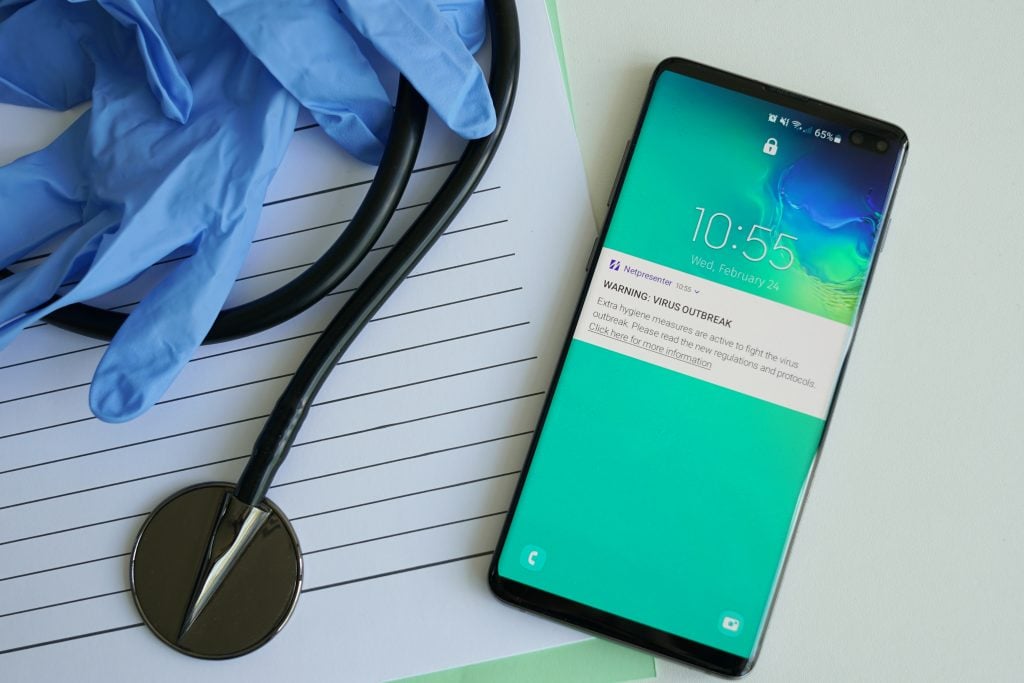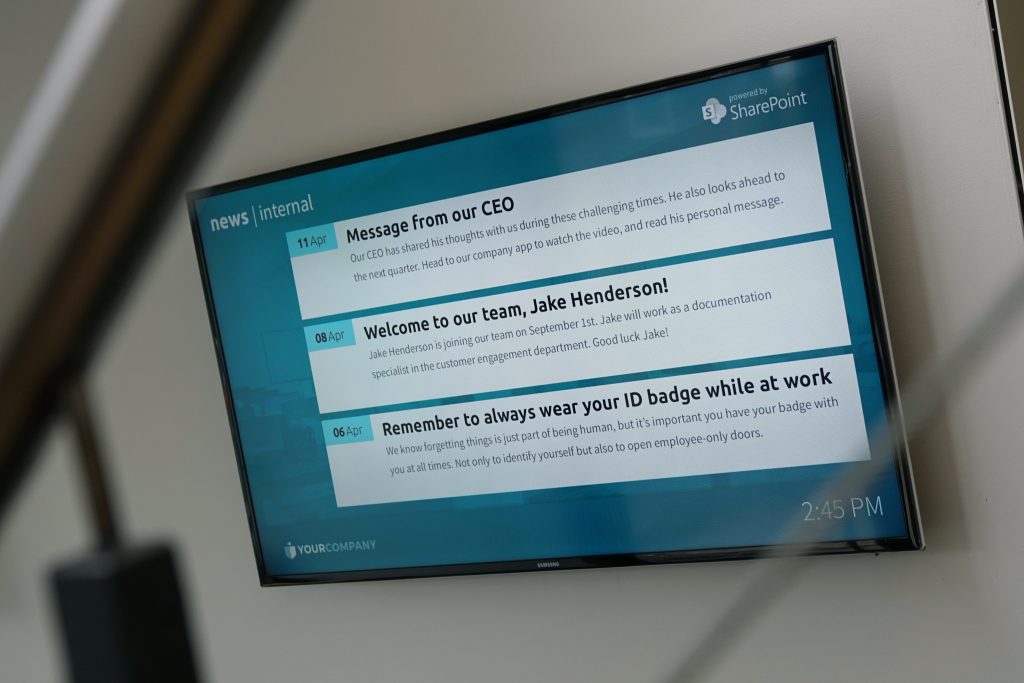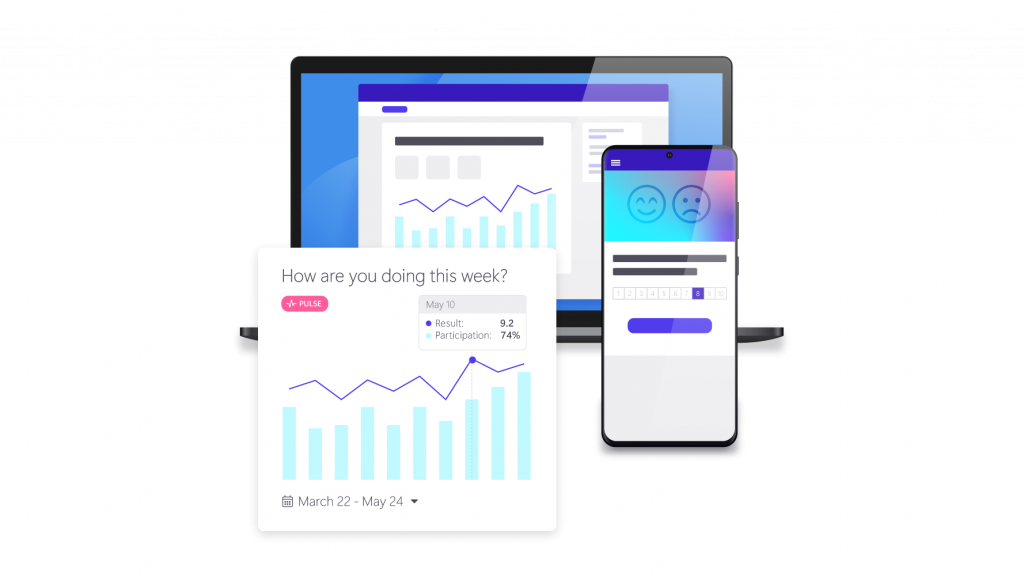Informing non-desk employees: the biggest challenges and solutions
Estimated reading time: 5 minutes
As many as 80 percent of all employees are non-desk workers. Non-desk workers are crucial employees for many organizations: they manufacture, transport, or sell products, care for patients, or visit customers. Yet, many organizations struggle to keep this incredibly important group of employees well-informed. In this blog, we look at the biggest challenges organizations face when informing non-desk employees, and we explain how your organization can overcome these challenges.
Table of contents
Non-desk employees are harder to reach
Reaching their non-desk employees might be the biggest problem organizations face. It is relatively easy to reach your office employees: they work with their PCs daily and are also usually all in the same location. As a result, they might catch information in the corridors, during meetings, or during their lunch break, to which non-desk workers don’t have the same spontaneous access.
Non-desk employees often do their work in varying locations, unlike desk workers, who might spend most of their working day behind their dedicated desk. Moreover, 83% of non-desk employees do not have a business email address. All of this makes communicating a lot more complicated. At least, if you’re still clinging to traditional email as your top communication channel.
Fortunately, non-desk employees can be reached very easily through other channels. Digital signage and a mobile app, in particular, are ideally suited for reaching this audience. You can reach factory workers or nurses with a digital signage screen in a lunchroom or other strategic locations. At the same time, a mobile app keeps delivery employees, mechanics, or other field workers informed.
Netpresenter combines digital signage with various other powerful channels in one integrated platform so that you can reach the entire organization from one CMS. This way, you have the benefits of various channels without adding an extra workload for your content managers

Our customer Barenbrug also ran into the problem of how to reach their non-desk employees. “Our newsletter only got sent to colleagues with a Microsoft Office account,” says Mirella van de Sant, Global Marketing Director at Barenbrug. “That meant that many people in the field, production, and logistics did not receive the newsletter at all. But we want to reach everyone, not just the people sitting behind a desk.” Netpresenter’s app solved all of that in one go. Mirella: “Our staff consists of about forty to fifty percent non-desk workers. Luckily, we can reach them more easily now.”
Non-desk employees don’t have access to all the info
About 99 percent of all technical applications are geared toward office workers. Additionally, non-desk employees spend little time behind a computer, meaning they don’t always catch an email immediately. These workers also tend to miss messages on SharePoint or essential data from Power BI as they don’t always have access to these platforms. And if they do have access, they might not have enough time to look for the right information on these channels.
To solve these problems, we developed various integrations with our platform. They directly bring information from other applications, such as SharePoint, Teams, and Power BI, to employees. Our advanced targeting options ensure that employees only receive content that’s relevant to them. This means non-desk employees no longer must search for the information; all relevant information is brought to them.

Rotterdam World Gateway, for example, uses large LED screens to inform its drivers of technical failures, delays, or unforeseen closing times. This information can normally be found on their intranet, but it is now also visible to the truck drivers thanks to this solution. These screens are strategically placed in front of the terminal, where trucks must park and wait before they enter the terminal. When they’re waiting, drivers get enough time to read all the messages before they resume work.
Non-desk employees often don’t feel heard
Communication should not just consist of top-down, one-sided messages and information dissemination; employees should also be encouraged to communicate. Only 22 percent of employees report that they can speak up enough to develop and implement new ideas. However, how will you collect input from employees who might not even have an email address?
Netpresenter provides several tools that make gathering feedback and social interaction a lot easier. First of all, employees can easily respond to messages or ask questions via the mobile app. Additionally, polls allow you to gather the opinions of large groups quickly, whether it’s about which snack they prefer for lunch, on which day a team outing should take place, or which new design of a logo they like best. With an attention booster, employees receive automatic reminders if they haven’t yet completed your poll. Pulse surveys allow you to collect feedback periodically over a longer period, giving you insights into how employees feel, whether they enjoy the workload, and what they think of the organization.

All these tools allow your employees to speak up and voice their opinions. At the same time, you can also use Netpresenter to show that you act in response to these valuable insights. After all, you can reach every employee, including non-desk employees. Use that power to show that you genuinely value and use your employees’ input.
Curious about how you can best inform the non-desk employees within your organization? Then download our free guide, ‘How to communicate effectively with non-desk employees’. Or schedule a free 30-minute demo or meeting today. We are happy to show you what Netpresenter can do for your organization!

